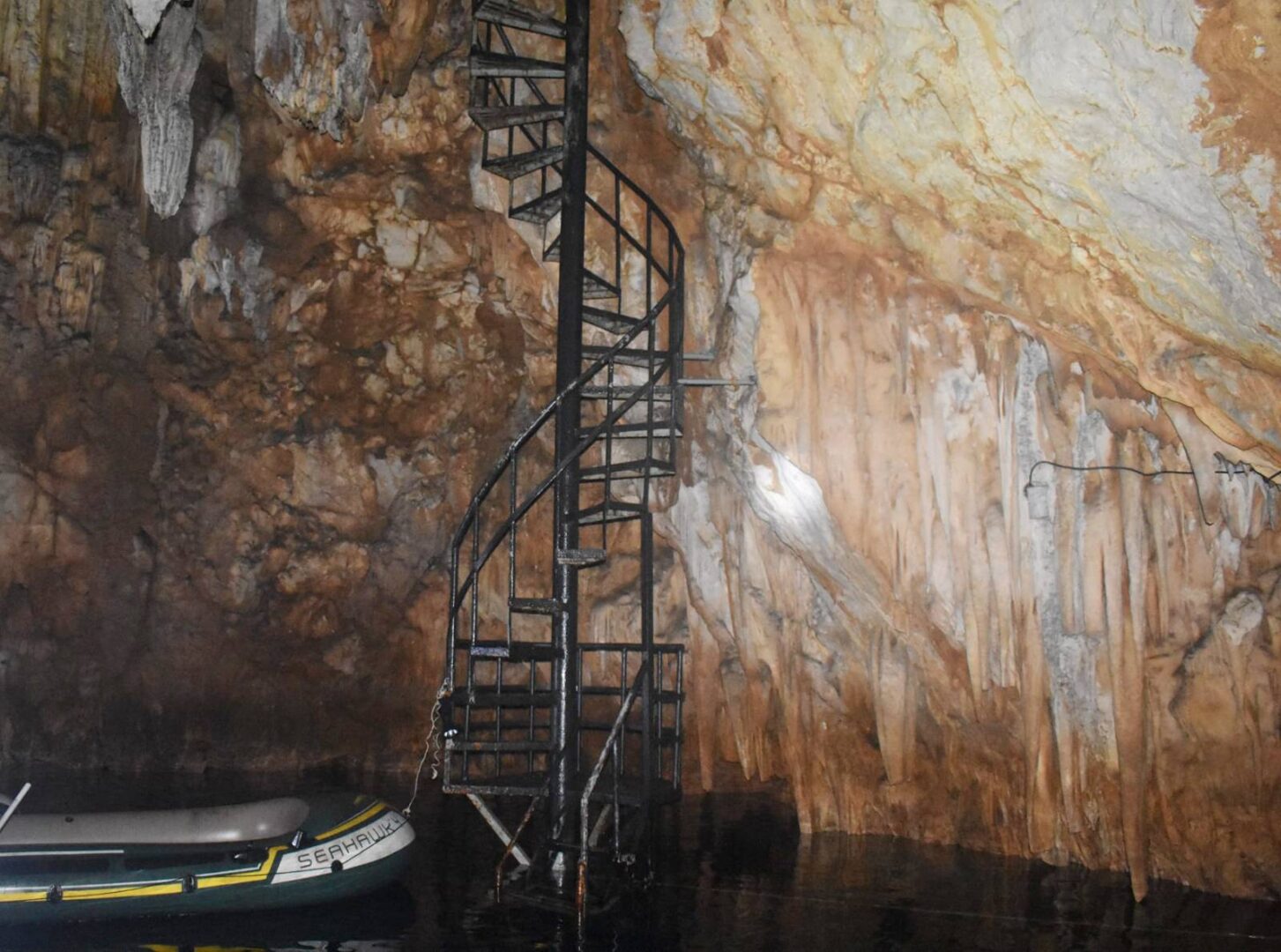PUERTO PRINCESA CITY, Palawan — The Palawan Council for Sustainable Development — the local government’s environment policy-making body — has filed charges against a foreign national and his local partners for developing a cave in Coron town into an underground eco-park without getting necessary government permits.
The cave, named Pukaway, lies within the ancestral lands of the Tagbanua indigenous community on Coron Island, which is situated opposite the mainland Coron municipality. This is the island where the famous Kayangan and Barracuda lakes can be found as well.
PCSD operational arm spokesperson Jovic Fabello that the foreign individual, whose identity is still withheld, is responsible for the unauthorized transformation of Pukaway Cave into an underground eco-park.
This included the installation of a steel spiral staircase affixed to the cave’s rock wall and the addition of blue and orange lighting.
Fabello said that the improvements are prohibited since they were carried out without the necessary government permits and approvals, violating Republic Act 9072 or the National Caves and Cave Resources Management and Protection Act.
“Such unauthorized alterations can have detrimental effects on the cave’s delicate ecosystem, disrupt the habitat of indigenous communities, and potentially harm the cave’s natural beauty and cultural significance. Therefore, the PCSD has taken legal action against those responsible to uphold environmental conservation and respect for indigenous lands,” Fabello said.
Despite receiving an order from the PCSD to cease operations, Fabello said the foreign developer and his group pushed through in promoting Pukaway Underground Eco-Park as a tourist destination in Coron town in northern Palawan.
Fabello said the matter about Pukaway was raised by the Tagbanua community members who earlier agreed with the foreign national to establish resort-style cabanas in their ancestral land.
However, this agreement, which was approved by the National Commission on Indigenous Peoples does not include the development of the said cave.
“We ordered them to stop,” said Fabello, “but the thing is, they continued to operate.”
“They bolted that staircase; it’s a long one. The cave has a precipitous decline that leads to the ocean. It becomes perilous during high tide, when the water level rises substantially, and tourists could become trapped inside,” he added.
He explained that there is a policy governing too the use of lighting materials within the cave, ensuring that they are not excessively bright so as not to disturb the cave’s fauna.
Fabello said although a lawsuit was filed against the foreign national and his group on 6 October for violating Section 7 of RA 9072, the Facebook page he uses to promote the underground eco-park remains active.
Pukaway Cave falls into the Class II cave category, denoting its significant geological, archaeological, cultural, historical, and biological value, as well as its hosting of high-quality ecosystems. Furthermore, certain sections within the cave pose potential safety risks.
In some areas, permanent closures might be necessary, with access restricted solely to experienced cavern explorers or guided educational tours and visits.
“What’s needed is an assessment before opening a cave. After the assessment, based on its specific classification, a management plan should be created. This plan outlines the necessary precautions and guidelines for its use. In theory, it can be developed, but the issue with Pukaway is that the developer did not obtain the required permits,” Fabello said.
He described Pukaway as having speleogems, which are valuable minerals or gemstones found in caves, often formed over long periods through geological processes and speleothems, deposits that grow in caves, such as stalactites hanging from the ceiling and stalagmites growing from the floor.
